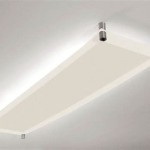Essential Aspects of Living Room Ceiling Lights Design
The living room, a hub for relaxation, entertainment, and socialization, deserves a lighting scheme that complements its ambiance. Ceiling lights play a crucial role in illuminating the space, setting the mood, and creating a welcoming atmosphere. To achieve the perfect living room ceiling lights design, consider these essential aspects:
1. Determine the Purpose and Ambiance
Before selecting lighting fixtures, define the primary purpose of your living room. Is it primarily a cozy sanctuary or a multifunctional entertainment hub? The desired ambiance will influence the light intensity, color temperature, and overall design of the ceiling lights.
2. Consider the Room Size and Shape
The size and shape of the living room dictate the number and placement of ceiling lights. A large room may require multiple fixtures, while a smaller space can be adequately illuminated with fewer lights. The shape of the room, such as rectangular or square, will also impact the distribution of light.
3. Select the Right Light Fixtures
Ceiling lights come in a wide range of styles and designs. Chandeliers, pendants, recessed lights, and track lighting are popular choices for living rooms. Chandeliers offer a touch of elegance, while pendants provide a more modern aesthetic. Recessed lights are discreet and provide ambient illumination, and track lighting offers flexibility in directing light where needed.
4. Choose the Appropriate Light Bulbs
Light bulbs play a significant role in determining the ambiance and energy efficiency of the lighting scheme. Consider the following factors: - Light intensity: Measured in lumens, determines the brightness of the light. - Color temperature: Measured in Kelvins, affects the perceived warmth or coolness of the light. - Energy efficiency: Choose bulbs with high CRI (color rendering index) and long lifespan to reduce energy consumption.
5. Plan for Layering and Control
Layering lighting creates a more dynamic and inviting ambiance. Combine different types of lighting, such as overhead lights, accent lights, and task lights. This allows you to adjust the light levels and create focal points. Controllable lighting systems, such as dimmers and smart home devices, provide flexibility in adjusting the mood and ambiance.
6. Consider Natural Light
Maximize natural light by positioning ceiling lights in a way that complements the flow of daylight. Consider the direction and intensity of sunlight throughout the day and how it affects the overall illumination of the living room. Combining natural and artificial light can create a well-balanced and energy-efficient lighting scheme.
By carefully considering these essential aspects, you can create a living room ceiling lights design that complements the purpose, ambiance, and overall style of your home.

3 Best False Ceiling Lights You Can Use To Create Better Ambience

False Ceiling Light Options For Your Living Room Design Cafe

A Comprehensive Guide To The Best Ceiling Lights Designs For Your Home

9 Types Of False Ceiling Light Designs To Glam Up Your Home

Small Living Room Lighting Ideas Forbes Home

False Ceiling Light Options For Your Living Room Design Cafe

45 Ceiling Lights Ideas For Home Office

Unique False Ceiling Light Ideas To Brighten Your Bedroom

Modern Round Design Ceiling Lights For Living Room Bedroom Gold White Coffee Painted Circle Rings Lighting Fixture Lamp N Lighten

2 Piece Modern Led Ceiling Light White Nordic Style Acrylic Chandelier Creative Design Lamp For Bedroom Kitchen Living Room Corridor Restaurant Balcony Warm
Related Posts








